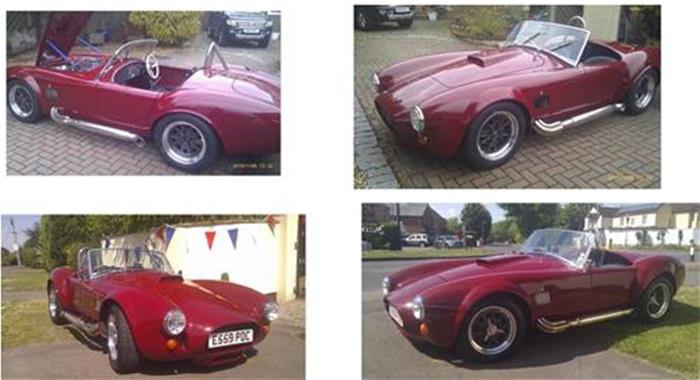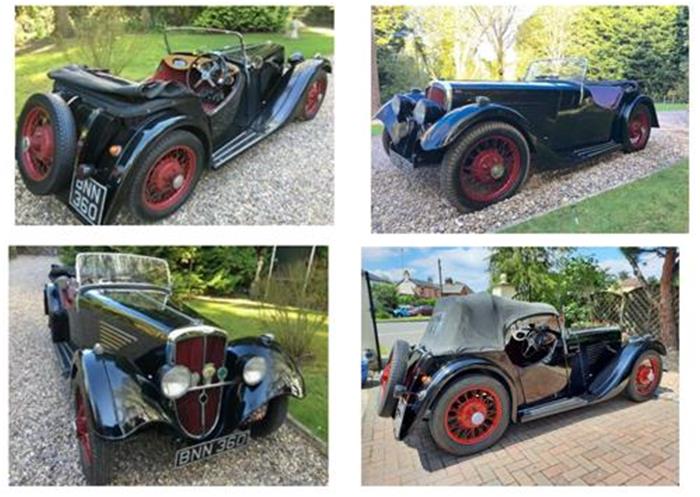Advanced driving in classic cars
Paul Whitehead – Group Secretary – Guildford Advanced Motorists – Fellow IAM RoadSmart.
I passed my IAM RoadSmart assessment originally in 1992 driving a Peugeot 205 1.9 GTI, which I somehow managed to get as a company car – today this would be regarded as a serious contender for one of the best cars ever made and good examples sell for healthy sums. The classic car market is alive and well, and many hundreds change hands at auctions and on forecourts every month.
I have always tried to apply IAM RoadSmart principles to my driving and I despair of the plethora, to my mind, of completely unnecessary gadgets that manufacturers seem to add to their latest models without a thought for whether they will be used or indeed useful. My latest favourite is a warning to the driver that the vehicle in front of them in a queue has moved off and it reminds you to do the same. Are drivers not looking out of the windscreen?
But I digress. Since building a replica Cobra in 2018 and then recently purchasing a 1935 ‘sports’ car which I have fully recommissioned, my advanced driver training has been put to very good use. In short, everyone should go through the IAM RoadSmart course and take their advanced driving test, especially if you drive a car that is not built to current standards.

The Cobra is relatively easy to drive – 5 speed manual (no synchromesh on first and reverse) rear wheel drive conventional set up, but with a 7.3 litre engine developing not far short of 500BHP. In the wrong hands that will put you in the hedge backwards at the first sign of trouble or rain, so advanced driver training is essential to make sure you get home safely. Apart from keeping a good distance from the vehicle in front (no servo on the brakes in this car, nor power steering or ABS), your observation skills must be to a high standard. Spotting hazards early will make for smoother progress, and concentrating on limit points and position through bends will help keep the car on the right lines – exaggerated steering inputs and late decisions will cost you dearly.
The Cobra had to meet current Vehicle Assessment standards (a 4 hour MOT that checks EVERYTHING after construction is complete) and it has seat belts, an MOT certificate, good modern lights and wipers, big fat new radial tyres and an addictive soundtrack. Nothing so grand in the BSA Scout!
BSA made a small number of cars in the thirties, starting with trikes and adding a fourth wheel in 1935. The BSA Scout Series 1 has a three speed manual gearbox with no synchromesh, a 1050cc 10HP engine, and a wood and aluminium body on a steel frame. The accelerator is in the centre of the pedals, with the clutch on the left and brakes on the right, and the long gear lever is between your legs. In long trousers, I regularly get the handbrake caught inside my right trouser leg as I wind my 6’2” frame into a car built for a different generation. Driving it is a real challenge.

Having purchased the Scout as a non-runner it is now fully operational, but it demands 100% attention from the driver. There are drum brakes at each corner, but they are rod and cable operated and not quite up to modern standards, so slowing for bends and junctions can be done by dropping a gear (3 to 2, double declutching the ‘cork in oil’ clutch of course) – this slows the vehicle to a respectable speed, but the real trick is to have such good observation and anticipation that you don’t stop at junctions or roundabouts if at all possible.
Every journey is memorable as you try to complete the task without crashing a gear, stalling at a junction or slowing other motorists - 40 mph in a car with no seat belts and dubious brakes means every move has to be planned, and the ‘suspension’ requires you to avoid all the potholes and other surface imperfections. My advanced driver training has seen me through a few tricky moments, but confidence is improving. Without the building blocks of Observation, Anticipation and Planning I would not be so adept at piloting an 86 year old car round the lanes; speed is not the issue – it is smooth progress despite all the flaws in the vehicle and the challenges of the roads and other road users.
So I believe advanced driver training is essential for anyone who drives an older vehicle. You have to be aware of the limitations of the era you have returned to and suddenly all the advice in Roadcraft makes sense – you realise why it was written in the way it was all those years ago. I would recommend all drivers to try an older vehicle and see just how much their modern car insulates them from the world around them – no cup holders and sat nav for me - you listen to the engine, respond to the creaks and bumps felt through the seat of your pants, and take in the smell of the countryside and the Redex in the fuel. Relax – motoring as it used to be.

